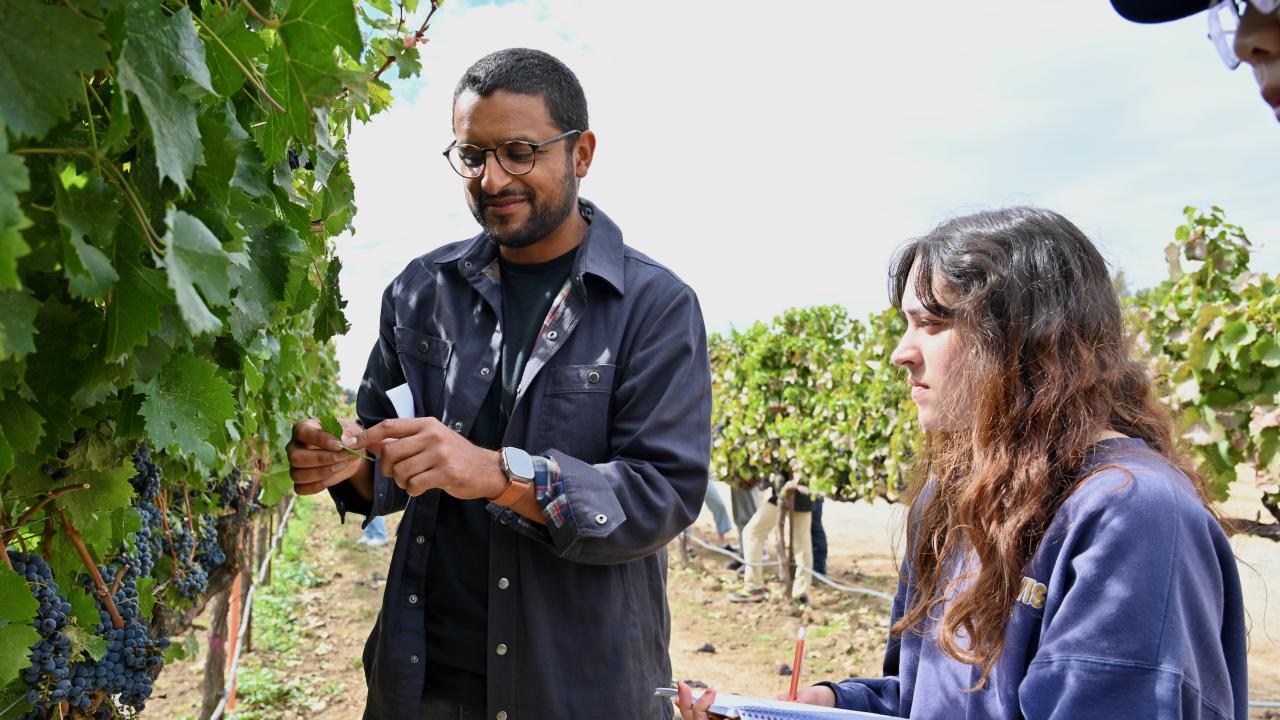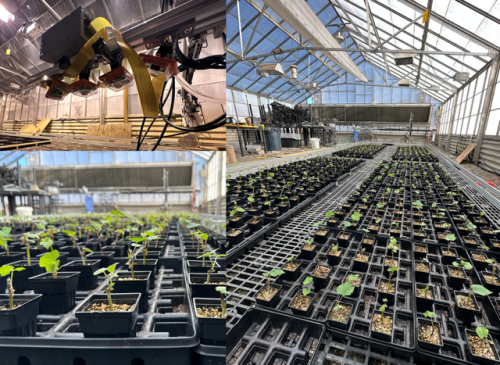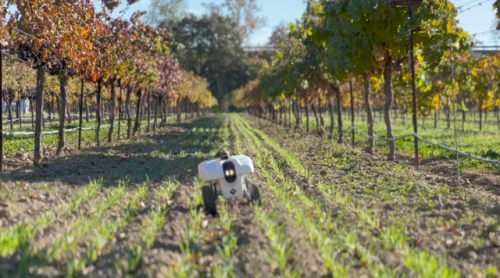
Dr. Luis Diaz-Garcia is an Assistant Professor and Grape Breeder in the Department of Viticulture and Enology at UC Davis. He succeeded Dr. Andrew Walker, who led winegrape and rootstock breeding efforts at UC Davis for over 30 years. Dr. Diaz-Garcia earned his bachelor's degree in Agronomy from Universidad Autónoma Chapingo, Mexico. He then completed his master's degree in plant biotechnology at the National Laboratory of Genomics for Biodiversity (LANGEBIO) in Mexico, where he used systems biology and bioinformatics to study yeast stress. Subsequently, he obtained his Ph.D. in plant breeding and plant genetics from the University of Wisconsin-Madison. There, he worked on various aspects of cranberry genetics and breeding, including the identification of genomic regions associated with fruit quality traits, the development of high-throughput approaches for phenotyping, the assembly and annotation of the cranberry genome, the analysis of genomic selection pipelines, and the phylogenomic study of wild cranberry relatives.
Before joining UC Davis, Dr. Diaz-Garcia held a position as a research scientist at the National Institute for Forestry, Agriculture, and Livestock Research (INIFAP) in Mexico. During the four years that Dr. Diaz-Garcia worked at INIFAP, he led the efforts to develop a modern guava breeding program through the integration of genomics and phenomics. Additionally, he worked on other crop species relevant to Mexico, including maize and Capsicum. In the almost two years since Dr. Diaz-Garcia joined the department, he has focused on two major goals: first, the release of advanced breeding selections developed by Dr. Andrew Walker, and second, the restructuring of the wine grape and rootstock breeding program.
Currently, the breeding program is evaluating and improving several powdery mildew and Pierce’s disease-resistant wine grapes that were selected as candidates for release by Dr. Walker. These new materials, like the recently released Walker PD-resistant lines (e.g., Camminare Noir, Ambulo Blanc, etc.), will produce high-quality grapes, be at least 93% vinifera, and are expected to have strong and durable powdery mildew resistance due to multiple powdery mildew-resistant genes, in addition to the already well-studied PD resistance. Dr. Diaz-Garcia is currently conducting additional rounds of crossings to increase quality (i.e., increase the vinifera percentage), generate different wine profiles, and combine multiple adaptive traits.

Important efforts are also being put into developing new rootstocks tolerant to drought and soil stresses such as salinity, boron, and nematodes. North America is home to more than 30 Vitis species; however, only three species (V. rupestris, V. berlandieri, and V. riparia) have been predominantly used for hundreds of years. Moreover, about 90% of the vines worldwide are grafted to about 10 different rootstocks. Most North American Vitis species and the available commercial rootstocks possess great allelic diversity to overcome challenges imposed by drought, soil salinity, pests, diseases, and the uncertainties of climate change. For instance, species like V. giridiana and V. ⨯ doaniana from the Southwestern region of the U.S. have shown promise for breeding, as they can exclude chloride, the main form of salt toxicity in grapevines. Commercial rootstocks like 110R, 1103P, Ramsey, and 140-Ru are sources of drought tolerance; however, they are sensitive to salt, nematodes, and phytophthora. Other rootstocks based on the hybrid grape V. ⨯ champinii offer good salt tolerance but are vulnerable to phylloxera and challenging to graft and root. There are also excellent sources of nematode resistance, such as the GRN series developed by Dr. Walker, but these rootstocks underperform under other unfavorable conditions. As many of these traits are polygenic (i.e., controlled by many genes), combining them into new rootstock materials requires novel breeding strategies, which is the most important goal in the Diaz-Garcia lab.

Historically, genetic improvement in grapevines has primarily focused on integrating single-gene traits (i.e., controlled by a single gene) into new cultivars. Single-gene traits include, for example, Muscat flavor, berry pigmentation, and Pierce’s disease resistance. However, these traits are only of interest for scion breeding. Scion breeding has become more efficient at selecting breeding materials that carry desirable single-gene traits through marker-assisted selection. Breeding for single-gene traits is easier and faster than breeding for polygenic, quantitative traits. Breeding for quantitative traits, like drought tolerance, is difficult and slow, as it requires a gradual, multi-generational increase of small-effect, beneficial alleles. Moreover, the long seed-to-seed cycle of many Vitis species, which takes at least two years, slows down the accumulation of beneficial alleles. By expanding the number of species used for rootstock breeding and implementing cost-effective, modern breeding pipelines, the rapid development of resilient and highly productive rootstock germplasm becomes possible. While improved vineyard management techniques may mitigate some of the short- to medium-term impacts of climate change and other current challenges to growing grapes, genetic improvement is necessary for long-term solutions. Currently, the Diaz-Garcia lab is working on several projects focused on developing high-throughput methods based on AI-powered computer vision, robotics, proximal sensing, and genomics, to screen drought tolerance and tolerance to salinity and boron in rootstock germplasm.
Multidisciplinary research is one of the most important drivers in the Diaz-Garcia lab, as modern breeding programs rely more and more on multi-omics technologies and big data. His lab is currently composed of postdoctoral researchers, scientists, staff, and undergraduate and graduate students with backgrounds in agronomy, plant physiology, physics, and computer science. In addition, Dr. Diaz-Garcia’s lab maintains close collaboration with other faculty members in the Department of Viticulture and Enology, including Dr. Dario Cantù, for the generation of high-quality genomic datasets to enable genomic prediction, and Drs. Megan Bartlett and Andrew McElrone for the development of high throughput phenotyping techniques to screen for drought tolerance in rootstock germplasm. He is currently a Co-PI in the VitisGen3 project, a USDA-NIFA-SCRI project focused on developing powdery mildew-resistant grape cultivars. He serves on the NGRA’s Genetics and Grapevine Improvement Research Theme Committee, working with industry and other researchers to prioritize research directions on these topics. During the Fall, Dr. Diaz-Garcia teaches VEN101A – Viticultural Practices, and starting in the Spring of 2025, he will teach VEN111 – World Viticulture.
